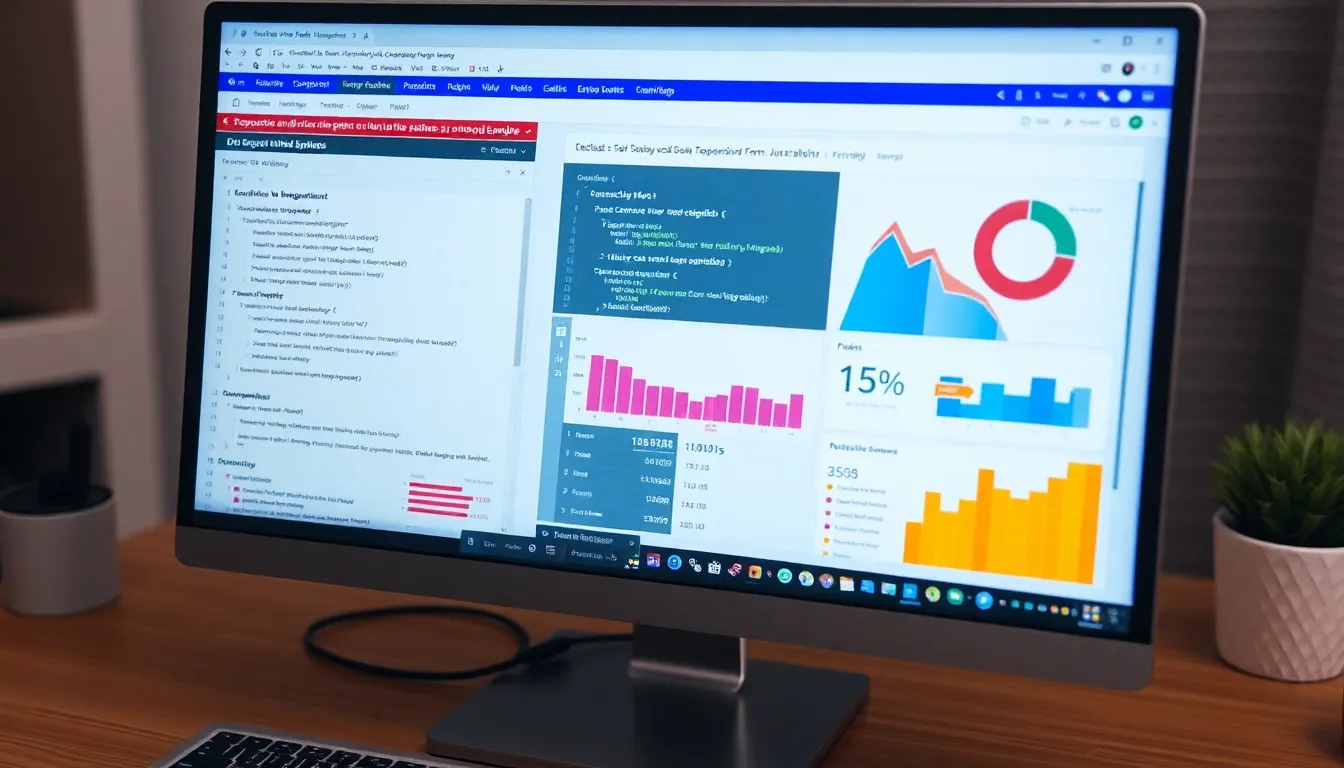In the vast universe of web development, JSFiddle stands out like a superhero in a sea of sidekicks. It’s the ultimate playground for coders, offering a space to experiment, collaborate, and showcase their creativity. Whether you’re a seasoned pro or just dipping your toes into HTML, CSS, and JavaScript, JSFiddle makes it easy to whip up stunning examples in no time.
Imagine being able to test your code and see results instantly—no more waiting for that stubborn local server to boot up! With JSFiddle, developers can share their work, learn from each other, and even solve coding conundrums faster than you can say “debug.” Dive into this article to explore some eye-catching JSFiddle examples that’ll inspire your next project and make coding feel like a breeze.
Table of Contents
ToggleOverview of JSFiddle
JSFiddle serves as a dynamic online platform, enabling developers to write and test code snippets in real-time. Users can create unique projects integrating HTML, CSS, and JavaScript seamlessly. Instant feedback occurs when users modify code, allowing for quick debugging and fine-tuning.
The interface presents separate panels, one for each coding language, ensuring an organized workspace. Individuals can share their projects with others, promoting collaboration and constructive feedback. JSFiddle provides a rich repository of libraries and frameworks, including jQuery, Bootstrap, and React, which enhances development possibilities.
Focusing on ease of use, JSFiddle caters to beginners and seasoned developers alike. It encourages experimentation, fostering a creative environment where innovative solutions can flourish. Users can save their work and generate specific links for others to view, making it easy to showcase new ideas.
Several additional features enhance the platform’s functionality. Developers can embed their fiddles into blogs or websites by using generated HTML codes. This capability supports sharing work across various platforms, widening audience reach.
JSFiddle remains an integral resource for web developers striving to showcase their skills and concepts. Efficient code testing, easy sharing, and ample resources ensure that users maximize their coding experience, transforming concepts into tangible results.
Popular JSFiddle Examples


JSFiddle showcases a variety of coding examples that inspire creativity and problem-solving among developers. Below are popular categories where developers frequently find valuable use cases.
Web Development
Web development examples on JSFiddle often feature interactive components that enhance user experience. Developers create responsive navigation bars, engaging sliders, and dynamic forms using HTML, CSS, and JavaScript. Most projects leverage frameworks like Bootstrap or libraries like jQuery for quick implementation. Many users demonstrate how to manipulate the Document Object Model (DOM) to modify elements in real-time. These interactive examples serve as practical guides for mastering essential web development concepts while encouraging experimentation.
Data Visualization
Data visualization on JSFiddle unlocks powerful insights through graphics and charts. Developers utilize JavaScript libraries such as D3.js and Chart.js to represent complex datasets visually. Engaging examples often include dynamic graphs, interactive maps, and real-time data displays. Each project demonstrates different techniques for analyzing and presenting information, enhancing user interaction. Users frequently share these examples to illustrate data storytelling, showcasing how visuals can effectively communicate insights and findings.
How to Create Your Own JSFiddle Example
Creating a JSFiddle example involves a straightforward process. Users can easily set up their coding environment and follow best practices for efficient coding.
Setting Up Your Environment
Start by visiting the JSFiddle website. Users encounter an interface divided into panels for HTML, CSS, and JavaScript. Each panel allows them to input code for different components of their project. Choose from existing libraries like jQuery or Bootstrap to enhance projects instantly. Save changes regularly to avoid data loss. Generate a unique link to share or reference their work anytime. This setup streamlines the experimentation process while providing instant feedback.
Best Practices for Coding
Utilizing best practices ensures clean and maintainable code. Begin by writing clear and descriptive comments within the code to explain their purpose. Follow a consistent naming convention for variables and functions to enhance readability. Organize the project logically, placing related components together. Break down complex functions into smaller, manageable parts for easier debugging. Regularly run the code to identify issues early. Following these practices makes collaboration smoother and improves overall code quality.
Benefits of Using JSFiddle
JSFiddle streamlines the coding process by providing a centralized platform for developers. Instant feedback enhances the learning experience, as users can see changes in real-time without complicated setup procedures. Efficient project organization occurs through separate panels for HTML, CSS, and JavaScript, simplifying code management.
Collaboration becomes effortless due to sharing features. Users can generate unique links, making it easy to demonstrate projects or seek feedback. Embedding projects in blogs or websites further extends outreach, allowing developers to showcase their skills to broader audiences.
Access to a variety of libraries and frameworks significantly boosts development capabilities. JSFiddle supports popular options like jQuery, Bootstrap, and React, empowering users to create sophisticated applications without starting from scratch. Experimentation with different coding methodologies becomes seamless, encouraging innovation.
Flexibility is another key advantage. Developers of all skill levels benefit from JSFiddle’s user-friendly interface. Beginners find it approachable, while advanced users appreciate the depth it provides for complex projects. This adaptability fosters a creative environment that inspires new ideas.
Saving work frequently is crucial for maintaining progress. JSFiddle automatically saves sessions, so users can focus more on coding than on managing files. This feature reduces interruptions, allowing for a more productive workflow.
Overall, JSFiddle emerges as a vital tool in web development. It combines ease of use with powerful capabilities, enriching the coding experience and enabling users to bring their ideas to life.










